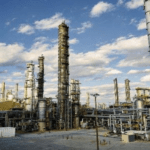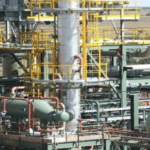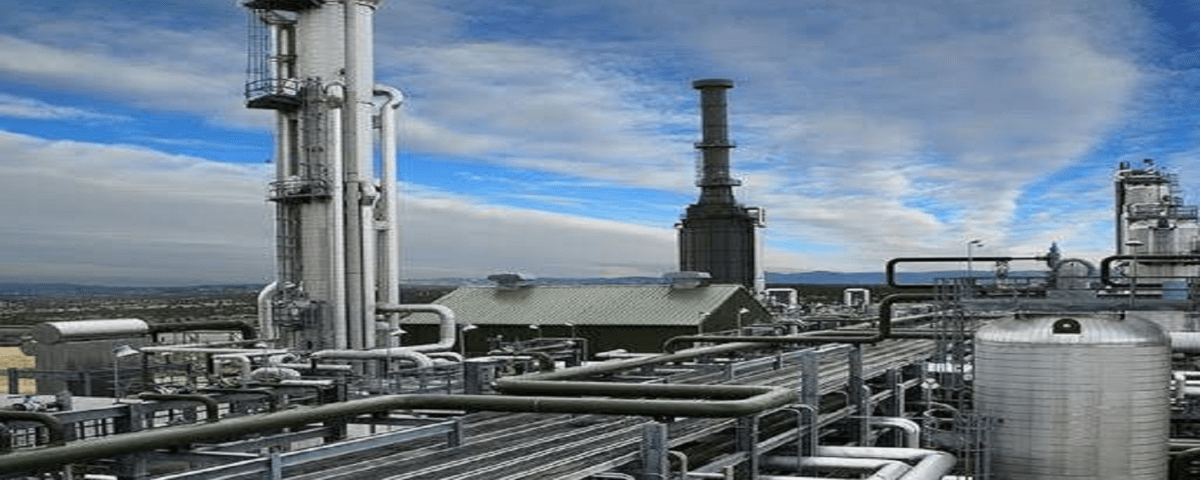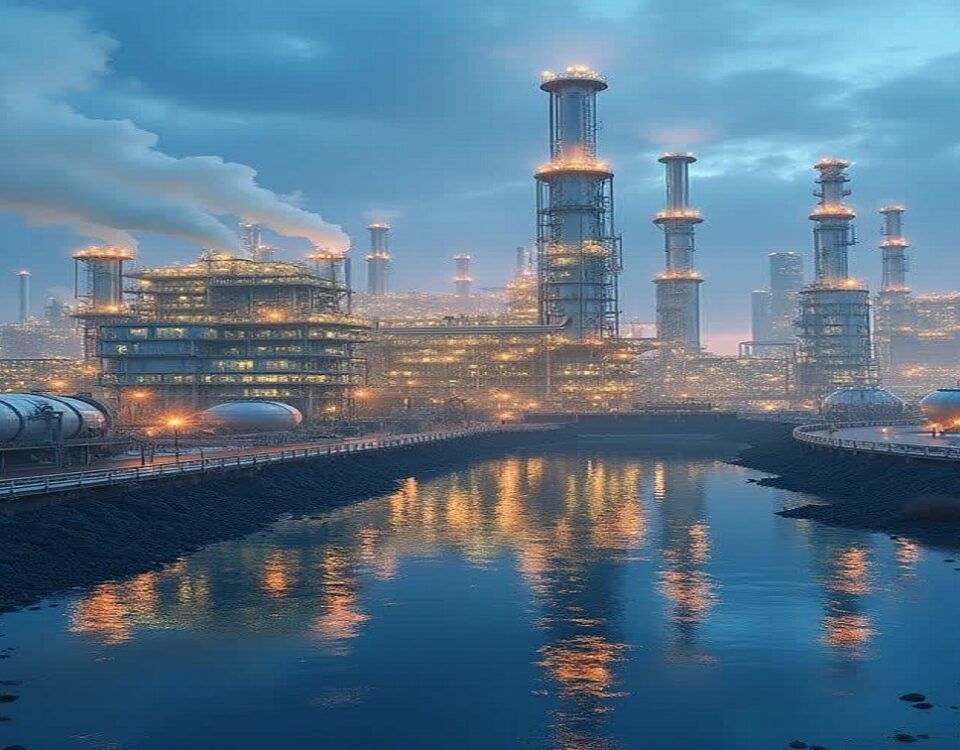
Gas Condensate Stabilization Unit
مهر ۵, ۱۴۰۳
Ethane Separation Unit
مهر ۵, ۱۴۰۳Unit for Hydrate Removal and Mercury Removal
This unit, found in each Train (4 units in 4 trains), is known as the Hydrate Removal and Mercury Removal unit. Its primary purpose is to remove water droplets along with sweet gas (after Unit 101). The process involves hydrate removal and drying of gas (Dry Gas) to prevent any Hydrate formation (a combination of water and hydrocarbons) during cold conditions and to keep the gas line safe from blockages and ruptures.
Function of Unit 104
Unit 104 is designed to absorb water particles in the gas using a solvent called TEG (Triethylene Glycol). The output of this unit should contain a maximum of 4 ppm (mol) water. The main characteristics of this solvent are:
- High purity of over 99.99% by weight.
- Temperature approximately 7 degrees higher than the inlet gas temperature to the TEG Contactor.
- Higher sensitivity to water absorption compared to MEG and higher cost.
Process of Hydrate Removal
Moist gas enters the tower at approximately 27 degrees Celsius and 3.65 Barg pressure from the bottom. As it moves upwards, it contacts with TEG entering from the top at 34 degrees Celsius and 3.66 Barg pressure in a counter-current manner. This process transfers water particles to Lean TEG and converts it to Rich TEG.
Purification of Output Gas
The dried and hydrate-free gas enters the Outlet Filter to absorb TEG and hydrocarbons, preventing Carry Over. It then passes through a heat exchanger to reduce the temperature of TEG entering the tower.
Mercury Particle Absorption
The dried and hydrate-free gas continues to the Mercury Guard tower for mercury particle absorption. The goal of this section is to absorb mercury particles that may accumulate with the gas over time. After passing through the tower, the gas enters a purifying filter to remove separated particles and catalysts before proceeding to Cold Box Unit 105 to prevent filter clogging.
Glycol Circulation
Rich glycol collected at the bottom of the contact tower enters the TEG Package for regeneration and circulation control. In this section, the rich glycol first enters the TEG Still Condenser, where its temperature increases and then enters the Flash Drum. The rich glycol is passed through two cartridge filters to absorb solid particles and then through a heat exchanger where its temperature is further increased.
Final Process
The rich glycol enters the Still Column and then the TEG Reboiler, operated by HP steam. At this stage, the TEG concentration should increase from 99.5% to 99.9%. This operation is performed through the Fuel Gas line. Hot gas from the bottom of the tower contacts with TEG from above to remove any water or hydrocarbons present in the TEG, which are vented as vapor to the flare.
Clean Nitrogen and Glycol
Clean TEG is transferred to the Surge Drum protected by a nitrogen line. the Clean glycol is pumped back to the gas/ clean TEG exchanger and then to the top of the tower. A portion of the pump output enters the Charcoal Filter to filter 20% of the glycol. Antifoam and pH Control lines are also included to prevent foaming and maintain pH levels in the glycol.

